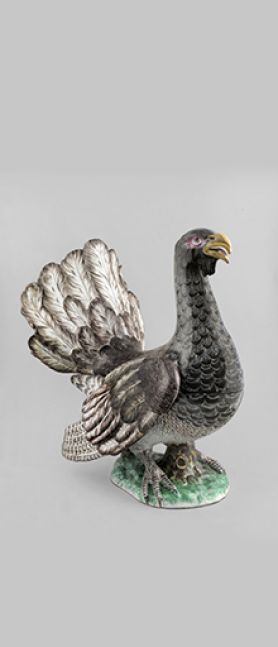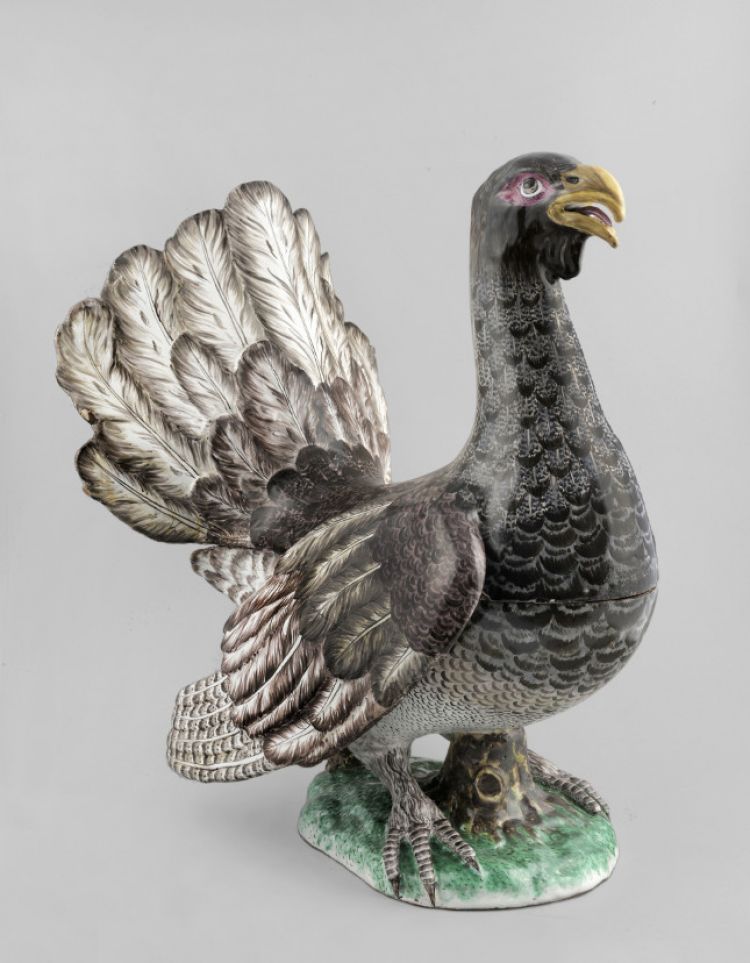Trompe-l'oeil great wood grouse serving dish

In the 18th century Strasbourg experienced a spectacular revival in the field of the decorative arts. Ceramic production developed in the famous Hannong factory's two centres in Strasbourg and Haguenau. Paul Hannong was head of the factory from 1730 to 1760 and was notable for his creativity and his desire to innovate. Significant technical progress was made, including the development of a new colour called "Cassius purple". At the same time, the production of trompe-l'oeil terrines in the shape of animals and plants made great advances. These naturalistic pieces were very successful and enabled the factory to play a prominent part in European production. The animal terrines take their inspiration from hunting and depict large and small game. Among prestigious pieces of this kind, the great wood grouse is strikingly realistic, a remarkable technical feat. The terrines, containing pâté or meat stew, were placed in the centre of the table alongside salt cellars and oil and vinegar cruets.
